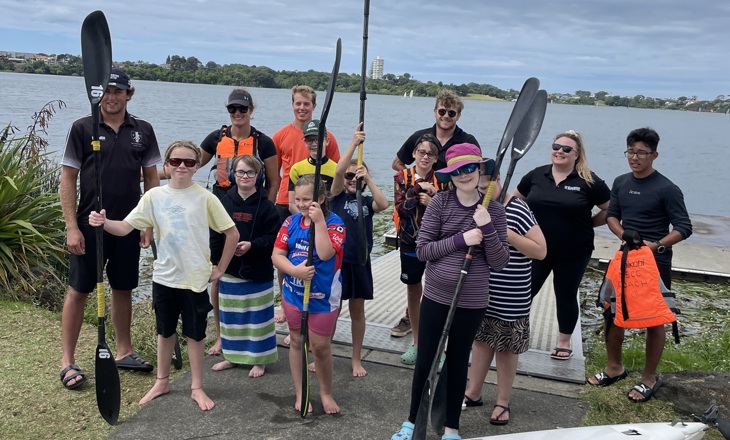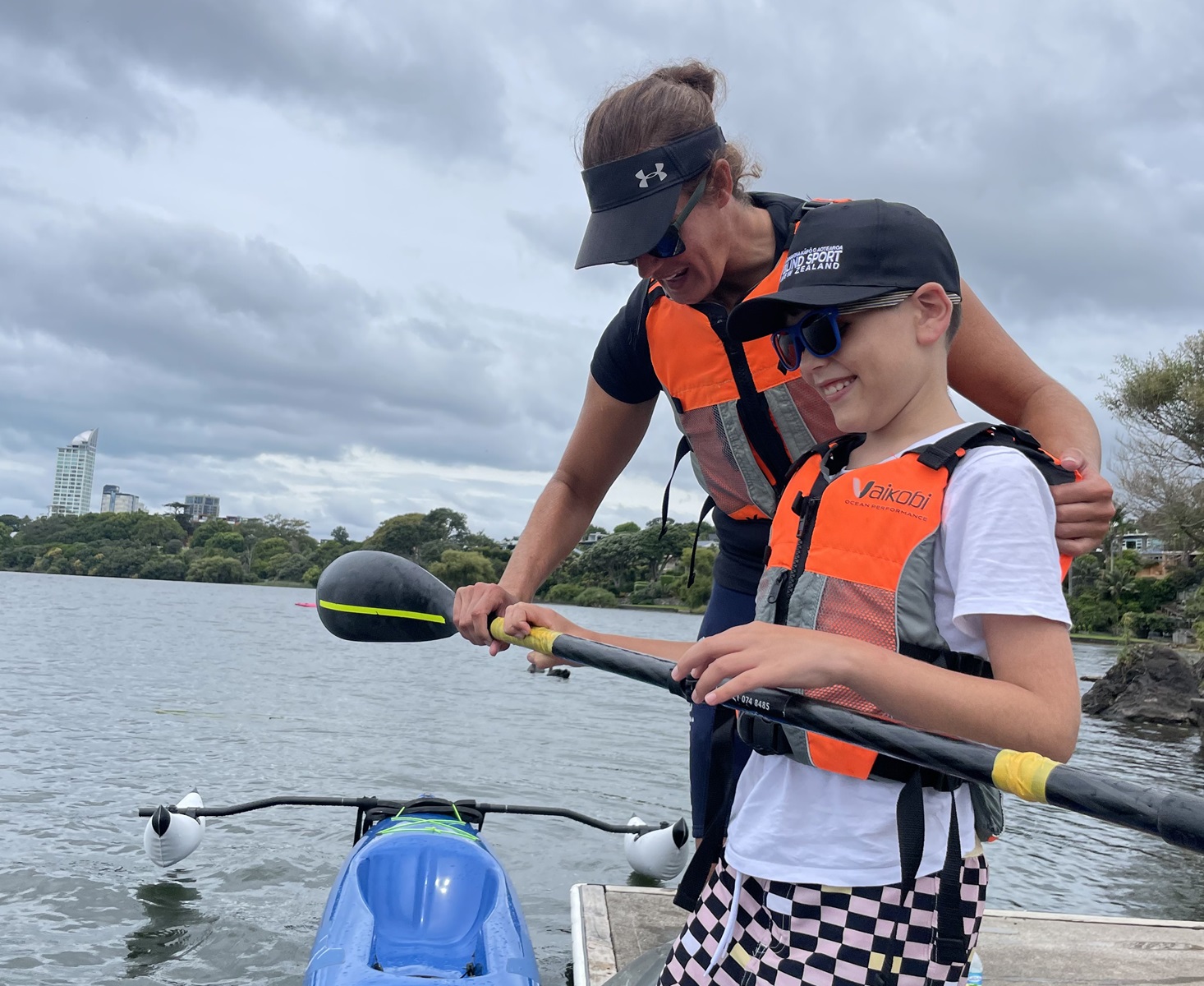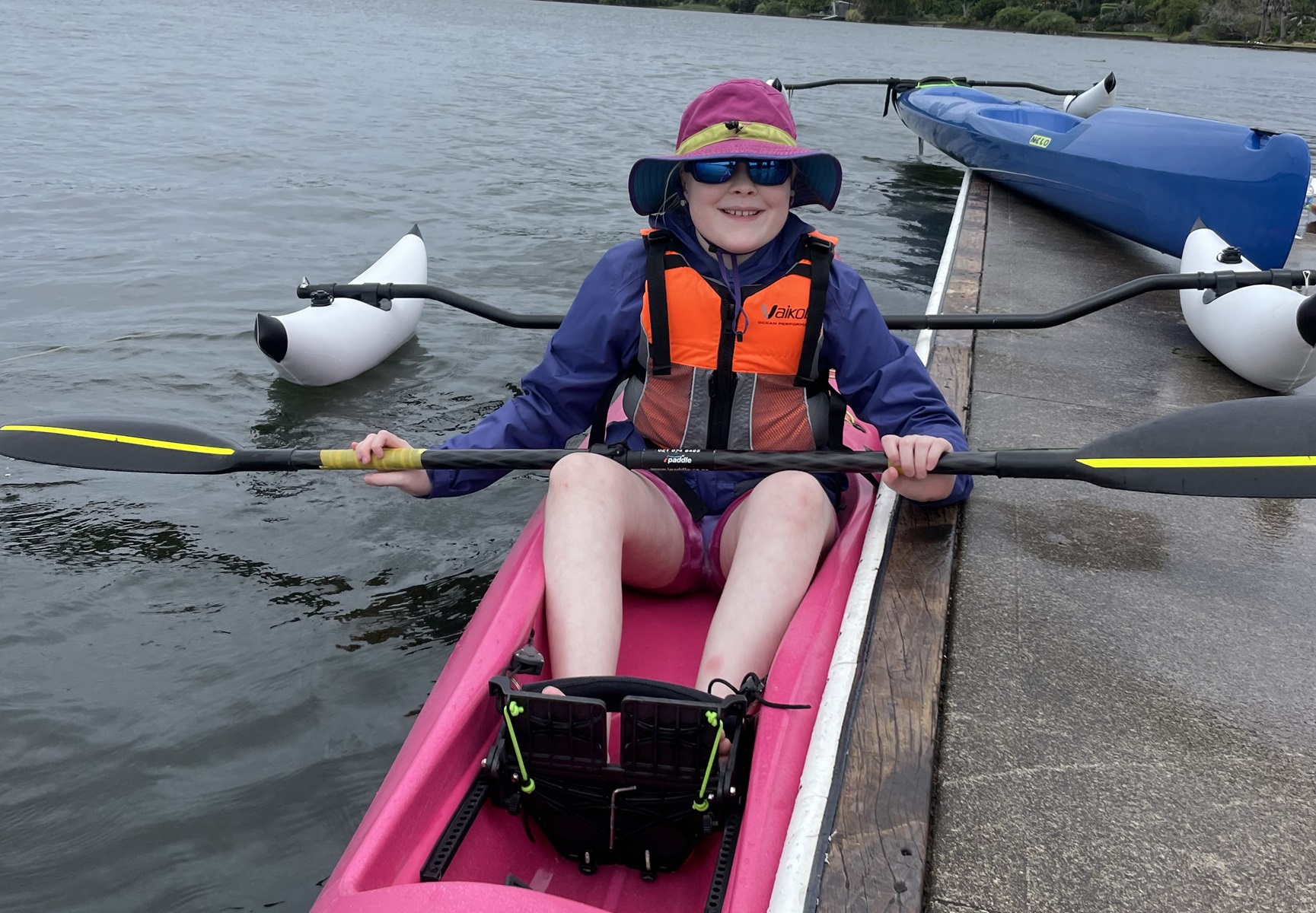PaddleAble: Empowering disabled paddlers across Aotearoa
PaddleAble: Empowering disabled paddlers across Aotearoa
Disability Inclusion Fund

Over the past couple of years, Canoe Racing New Zealand has been on a journey to make paddling more inclusive for disabled people. In this story, they share what they’ve learned so far and offer practical advice for other sports organisations looking to do the same.
It all started after a training session with the Halberg Foundation, where Canoe Racing NZ’s Aaron Osborne began to see the sport through a new lens.
“The Halberg training really opened our eyes to the bigger picture of becoming a more inclusive sport,” says Aaron.
That led to the development of PaddleAble - a programme aimed at creating a paddling environment where disabled and non-disabled participants can enjoy the sport together, both for fun and competition.
“It’s not just a matter of putting someone in a kayak,” says Aaron. “There is a lot more to it to get to that point and ensuring it’s a good experience. Being a water sport does add a level of complication and perceived barriers.”
With support from Sport NZ’s Disability Inclusion Fund, Canoe Racing NZ launched a pilot of PaddleAble at 2 clubs, 1 in Auckland and 1 in Hawke’s Bay. The goal now is to expand the programme and bring more clubs on board across the county.
Taking a long-term approach
Canoe Racing NZ's focus is to create lasting positive experiences for young people, so they keep coming back to the sport.
"We are trying to get 1 person to go paddling 52 times – not 52 kids paddling once. We want to bring people into our sport and kayaking community,"
Canoe Racing NZ started their journey by asking: Who can help us? Who already has the knowledge? That led them to connect with James Glen, Senior Manager at the Halberg Foundation, who ran inclusion training for their leadership and sport participation team.
Aaron says Halberg’s support has been invaluable. Together, the two organisations developed PaddleAble’s disability inclusion training, which includes both online and practical sessions. So far, over 70 people have completed the kayaking-specific training.
“The ability to bring James in on what we're doing with our sport challenged us to think differently, and he gave us the tools to work it out in our context,” Aaron says.
Freedom and fun on the water for young paddlers
The PaddleAble programme has made a meaningful difference for participants, offering both independence and coaching support. This has helped young people feel confident while learning at their own pace.
One participant spoke about the joy of paddling solo: “Being out on the water and having the freedom of being in my own canoe was great. It was really fun to paddle in a new environment.”
Another participant appreciated the welcoming environment created by coaches: “It was a fantastic experience for us! Fun and the coaches were supportive, friendly and enabled paddlers to perform to their capabilities and comfort level.”

Making inclusion part of the game plan
Aaron says creating a truly inclusive padding community starts at the top, with boards and committees, and needs to be backed up by action across clubs and throughout the sport.
“It’s simple things like having a statement on your website saying your club can cater for disabled people and a space on a signup form for a participant to state that they have an impairment or additional accessibility or support requirements.
“These examples build an awareness that kayaking is a possibility and go a long way in making someone feel like they are welcome and will be catered for,” says Aaron.
Focusing on the journey, not the destination
Aaron's advice for organisations thinking about how to include disabled participants is simple: Just start.
“It doesn’t need to be perfect before you start, otherwise you never will,” says Aaron.
He encourages clubs and organisations to think of inclusion as an ongoing practice of continuous improvement.
“In some cases, you don’t need to have an accessible building to start with. With many participants, you can work around those things through communication and thinking outside the box.
“We're on a journey to become better. If we think we're best practice, then we've probably stopped thinking about how to become better.”

